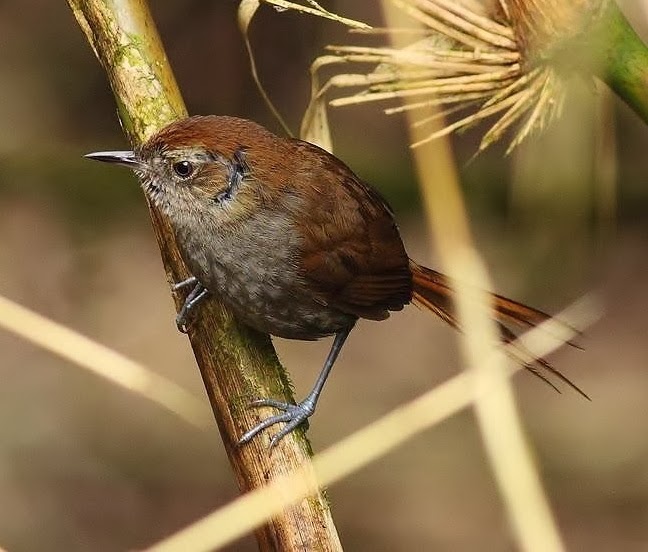 |
| Photo by Cock Reijnders (Internet Bird Collection) |
Common name:
puna thistletail (en); lenheiro-da-puna (pt); synallaxe de Heller (fr); piscuiz de la puna (es); punadistelschwanz (de)
Taxonomy:
Order Passeriformes
Family Furnariidae
Range:
This species is only found in a small area in southern Peru and marginally into western Bolivia, from the Vilcabamba-Ururbamba region, of central and southern Cusco, south through Limbani and Sandia in Puno, and into La Paz, Bolivia.
Size:
These birds are 17-18,5 cm long and weigh 13-17 g.
Habitat:
The puna thistletail is found in humid elfin forests and puna grassland, mostly along the tree-line at altitudes of 2.800-3.600 m.
Diet:
They are insectivorous, gleaning arthropods from live foliage, branches as well as mosses and lichens.
Breeding:
Puna thistletails breed in September-December. The nest is a domed structure made of grass and twigs, placed on a clump of bunch grass up to 0,8 m above the ground, usually facing the edge of the elfin forests, 1-2 m away from the forest edge. The female lays 2 eggs. there is no information regarding the incubation and fledgling periods.
Conservation:
IUCN status – VU (Vulnerable)
This species has a relatively large breeding range and is considered fairly common at a small number of localities. However, it is suspected to lose over 30% suitable habitat within its range in the next 10 years, based on a model of Amazonian deforestation, which given the susceptibility of the species to habitat fragmentation may cause a decline of over 30% over the same period. Beside accelerated deforestation, grazing and burning in the Andean tree line habitat may cause further habitat destruction and fragmentation.







